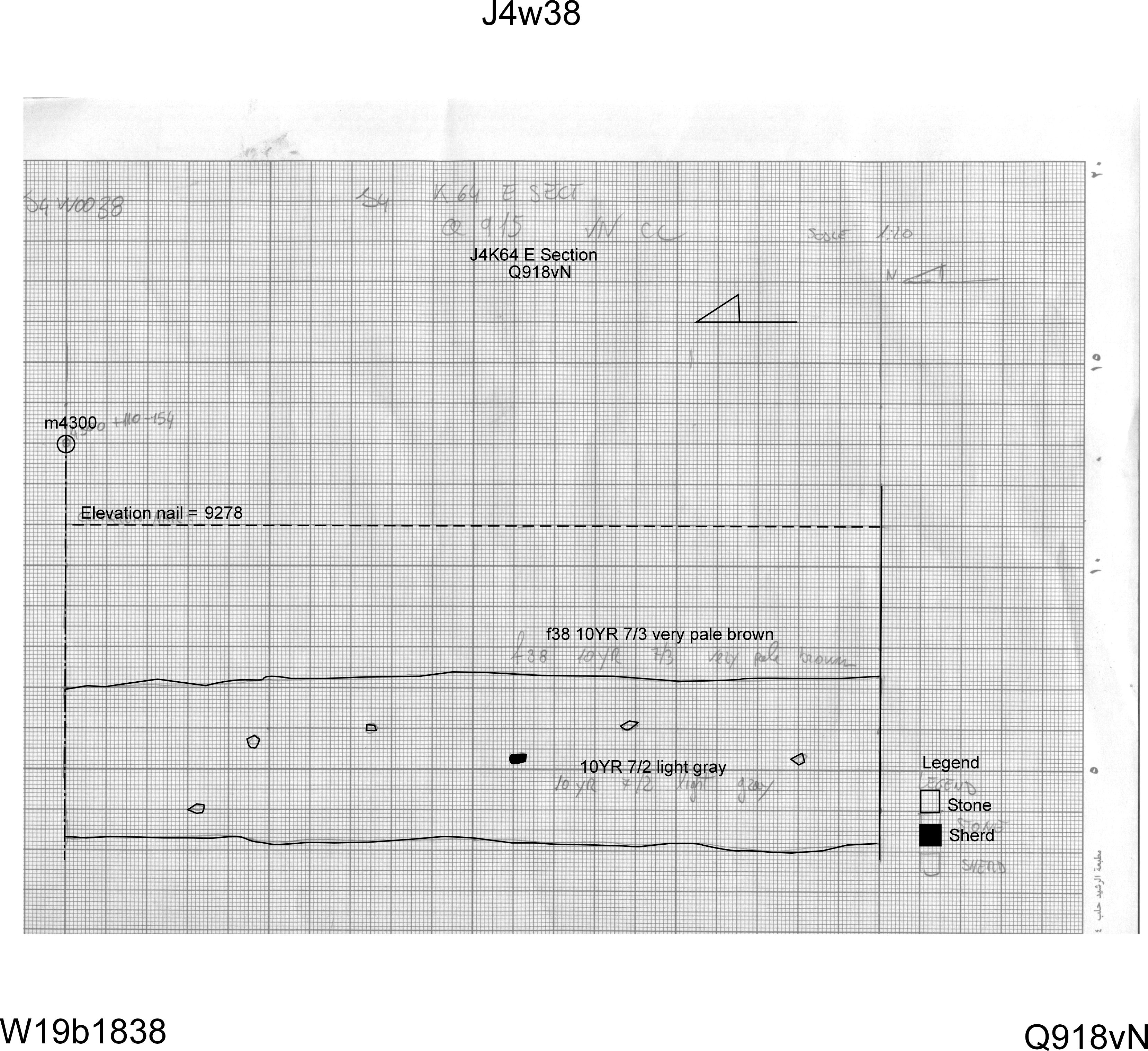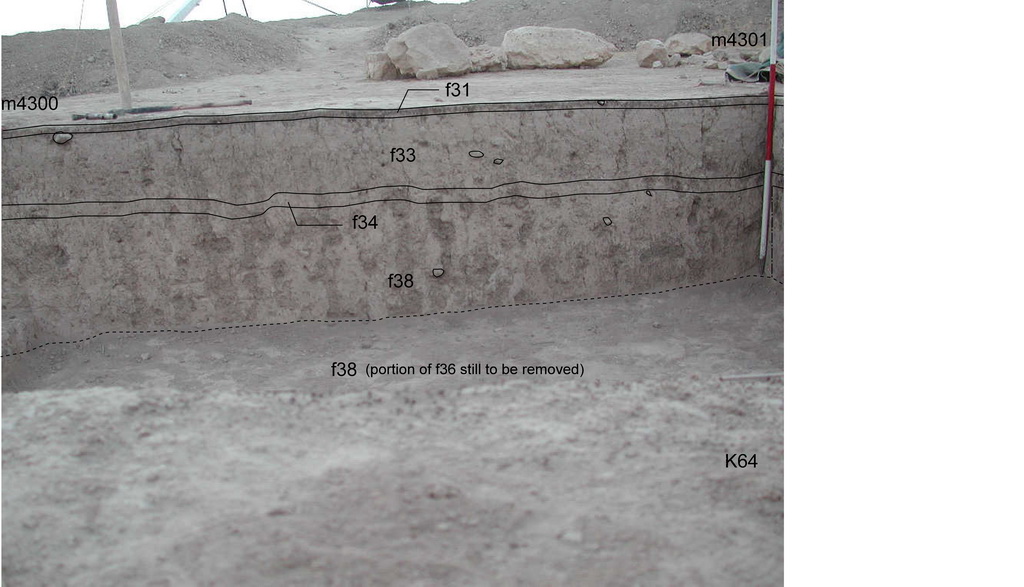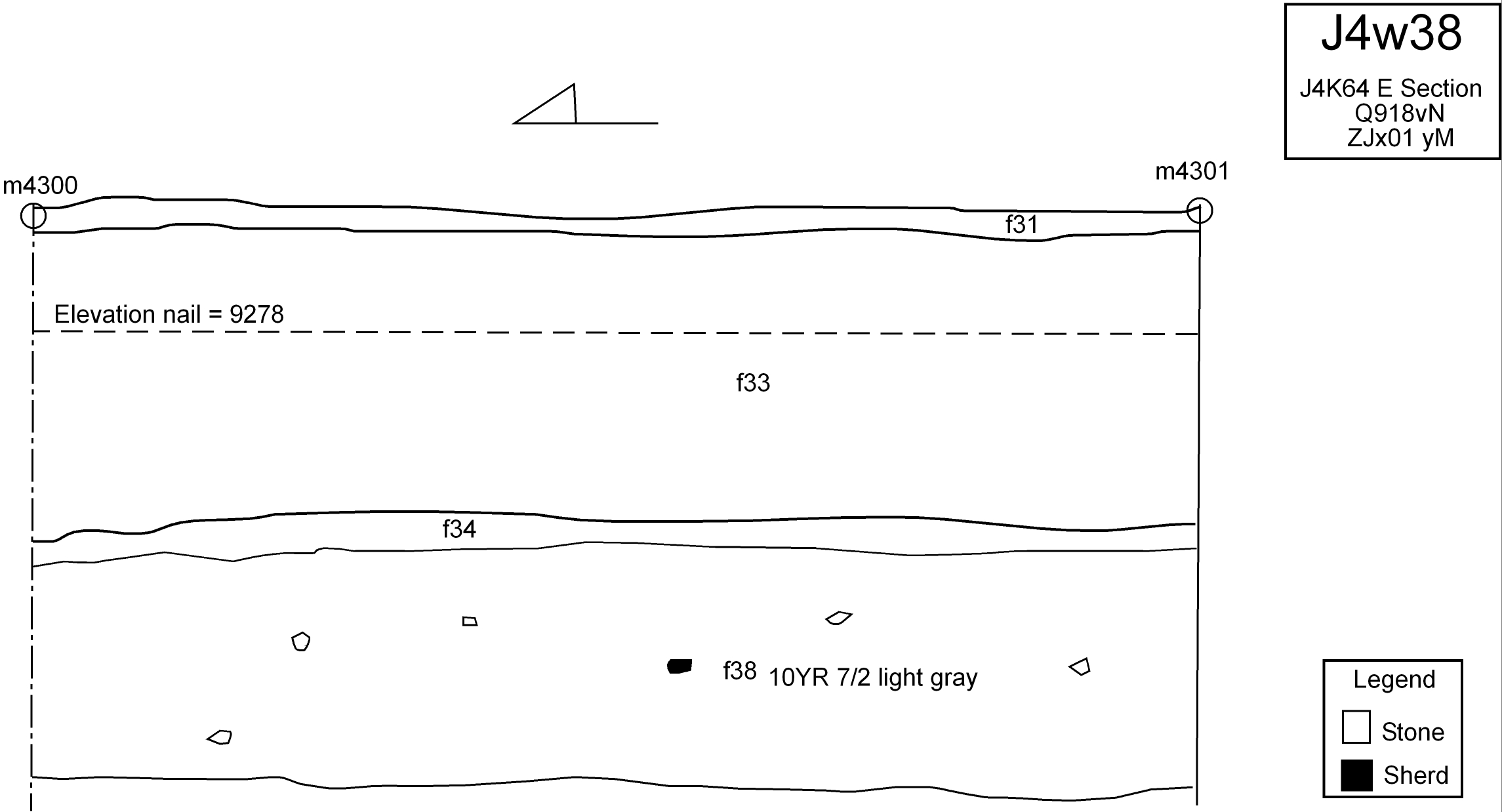Back to top: Errors
Introduction
The general approach to errors is described in the Identification of errors and accidents section of the Mozan sitewide book. The approach is to preserve each recorded data element that is based on observation or measurement These data are occasionally incomplete, in conflict, or in error. We specifically address these factors when they significantly impact a constituent. However, for the most part errors are small and have little cumulative effect. We discuss the recurring problems below for clarity.
Back to top: Errors
The excavation forms are filled by the unit team. the fact that these forms are handeled by diferent people could create some issues with spelling (most members are not native English speackers), and hand writing can be difficult to read.
Back to top: Errors
Documentation
The team follows a strict and thorough documentation system. However, when working on the data from an excavation unit after the passing of some time, arises the need for more general information than the ones that were considered during the excavation. This only become apparent when working on the entire narrative of the unit.
J4 lacks general views that puts into prespective its relationship with the adjacent units like J6 and J2, and that brings more clarity to its position and role within the entire temple terrace and complex.
Back to top: Errors
Vector drawings of sections
The verctor rendering of sections (ususally the north and east sections of each loci are drawn), contained many errors. The listing of these errors is not meant in any way as a critisism to the colleagues and students who worked hard on them, as i know personally how difficult it is to keep track of large amount of daily data, in a short period of time. It is mean however, as a way to draw attention to the fact that what is not done during the excavaion time, can become hard to retrieve and ery time consuming. The following are the main issues with the drawings and the vector format of these drawings:
- The lack of uniformity in the placement of the information on the drawing, resulted in some chaotic looking drawings, and forgetting to register some important informations, such as the elevation of the nail.
- in many hand drawings, the hand writing is very difficult to understand, meaning that the information is lost.
- Some pencil and vector drawings were not complete, where only one feature in illustrated, omitting the many other features shown in the photo template of the section (J4w38 as an example). The photo below show the section as it was drawn, the template photo and how it was adjusted to match the photo template.



- for some drawings, the photo of the drawn section is missing, making the retrival of the missing information, such as feature numbers (which was not registered anywhere), very difficult.
- when the drawing does not indicated a marker, and nail elevation was omitted, resulting to other methods to complete the drawing became indispinsile, however, inaccurate. An excample is J4w0023 . The drawing had no information except that it is the eastern section of k72. After looking at the views of k72, and finding the photo of the section, i was able to get the feature numbers.
The drawing represented only one feature, where it should have been two features. So the second one was added ased on the photo template of the section J4t0051. However, the template was made for the photo without the string, therefore, the added feature line on the verctor drawing is not very accurate.
The final step is figuring out the elevation of the nail. The photo and the drawing does not specify a marker from which this elevation can be calculated. Therefore, it was calculated based on the top elevation of the upper feature (taken from the feature page) minus the centimeters down to the string, which was calculated ased on the drawing scale. Needless to say that this time consuming process could hae been avoided by making sure to register all the information on the pencil drawing in he field.
It is important to know that in these cases, a note is included in the vectore drawing, which clearly states the process of informaion retrival, with the initials of the person who worked on it.
Section drawing are a powerfull tool in the reconstruction of the stratigraphic deposition of the area, and making the best use out of them entail having an accurate registeration of elevations, markers and feature numbers.
Back to top: Errors
Feature assignement
J4 containes many accumulation layers, and many isolated stones. the stones were resting on accumulation layers in most cases. The natural accumulation on which the stones rested, were given a feature number and termed pedestal. In reality, these are not prdestals that were intentionally created as pillars of soil for these stone, but they were rather excavated this way because the team was trying to understand the situation and the nature of these stones before removing them, hence excavating around them and giving these “pedestals” a different number.
While is is not an error, because there is a description that clarifies the nature of these feature, it does add complexity to the general strtigraphic situation andd creates more “types of contacts” with other features, which is not nessessary and to be avoided in future excavations.
Back to top: Errors
Phases and strata assigement
These phases in J4 were assigned using the MZA frame. This is not compatible with the other units of the temple and plaza area which uses the JPD stratigraphic chart.
This is not an error but a compatibility issue. Therefore, the following chart provides the corrisponding phases in the various stratigraphic assignement charts.
Back to top: Errors
Markers
The marker issue is of great importance, as they can help retrieve valuable informaion. The J4 body of data did not contain a file designated to the listing of all the marker that deliminated the excavation area and the loci. A sketch of the loci plan did list some o the markers for the loci and baulks, but not all.
I atttempted to retrieve this information from the plot files. Here i two problems arose:
- The first is that the plot files needs Autocad or a similar software to open these types of files.
- The second is what was assumed to be a plot file for J4, turned out to be a plot file for a different excavation unit (J1).
Another attempt to retrive the information was through the photo templates, which specify the markers deliminating the lous in the photo. This method was effective to some extent, however, it did not result in the retirval of all markers.
- Trying to retrieve the information from the marker file on the main surver is extremely difficult, as the file lable does not proide information about the location of the marker, so inspecting the content of the files one y one is ery challenging.
While these errors reflect the flexibilty of the system, and effectivness of the multi planarity approach, it opens they eyes o the elements that skip the attention while on the fiels, and encourages the archaeologist to work with a different mindset in the future, one that envisions the final results from the beginning.
Back to top: Errors
Relays
Relays r74, r139, r161, and r162 are missing.
Back to top: Errors